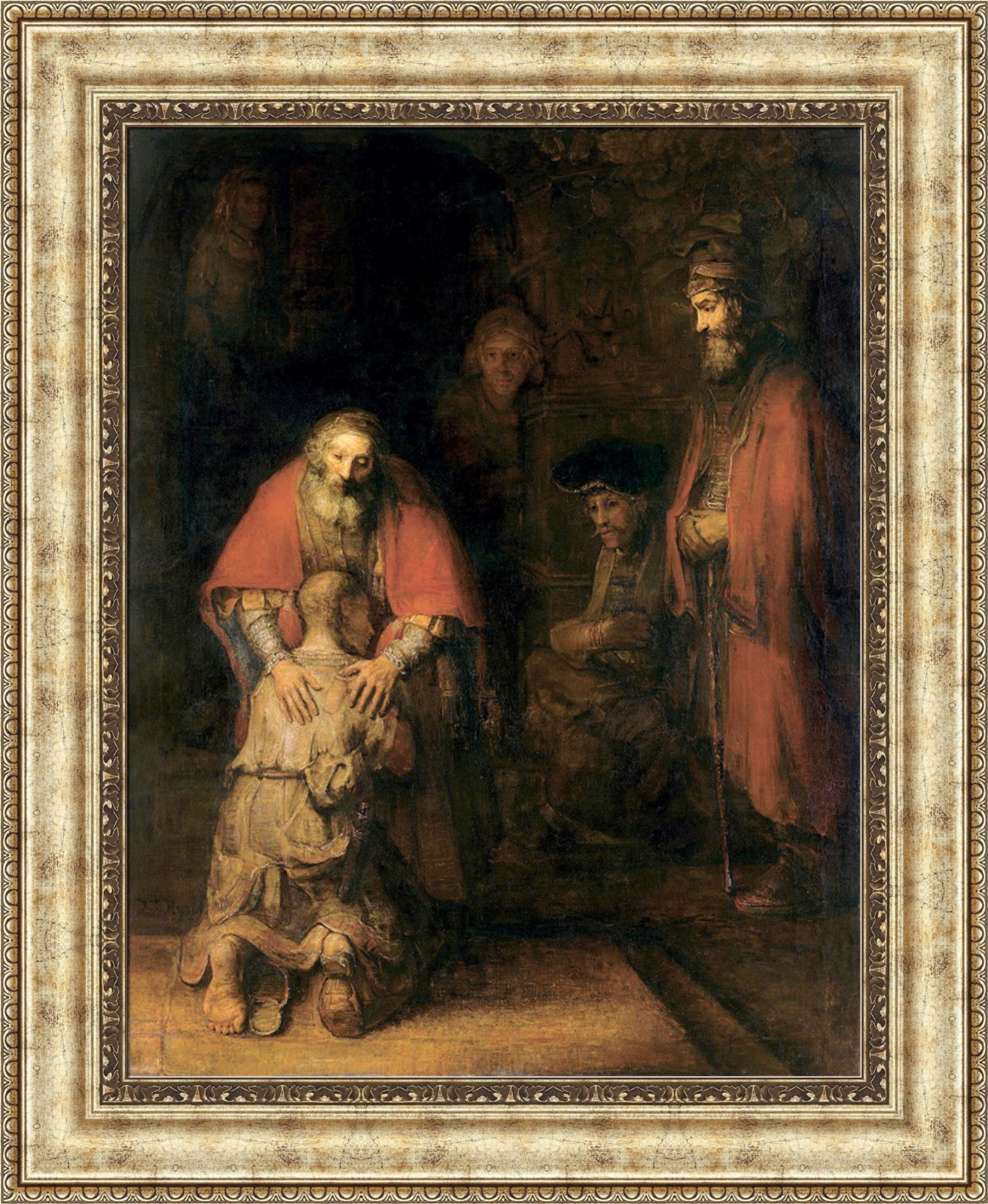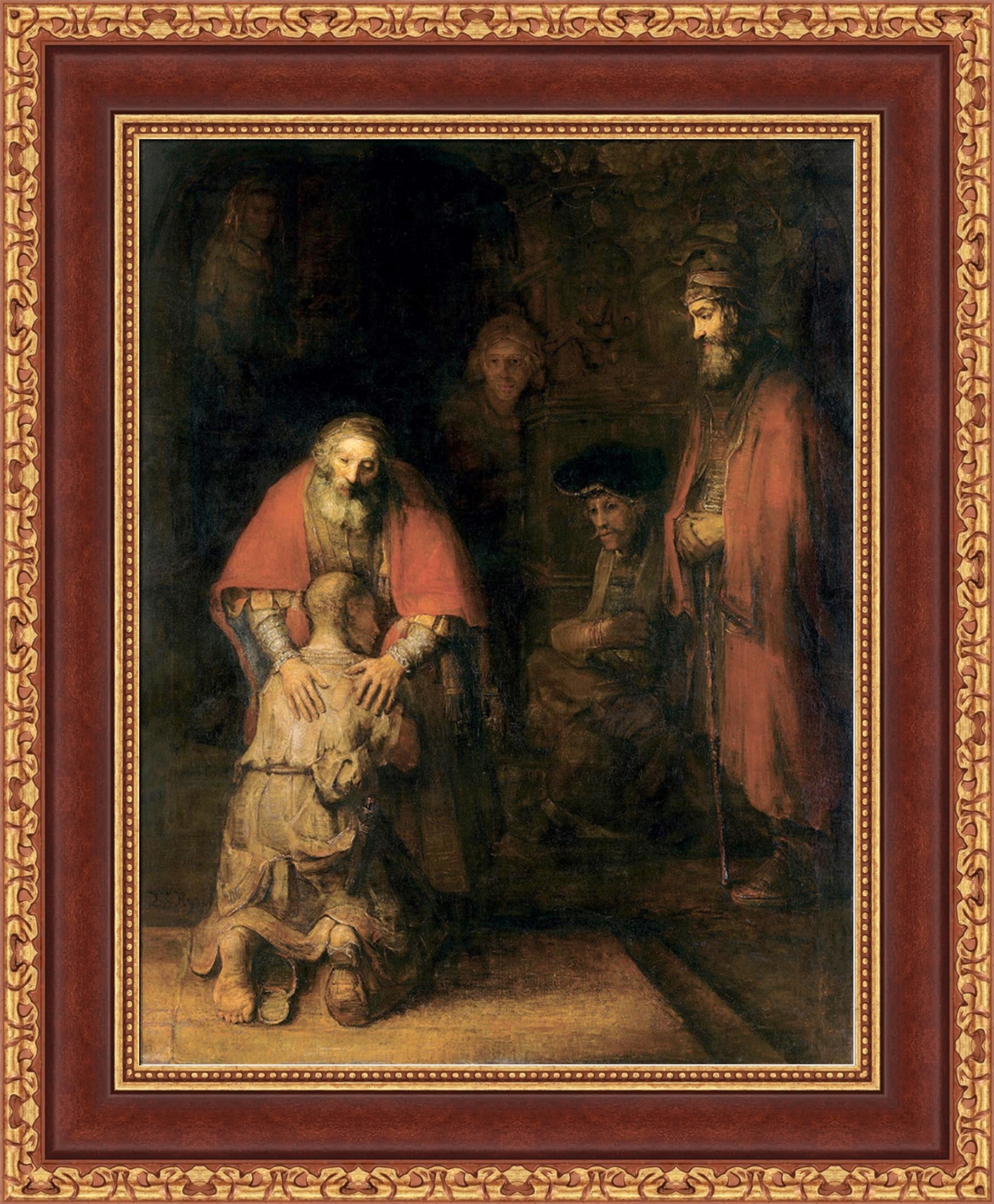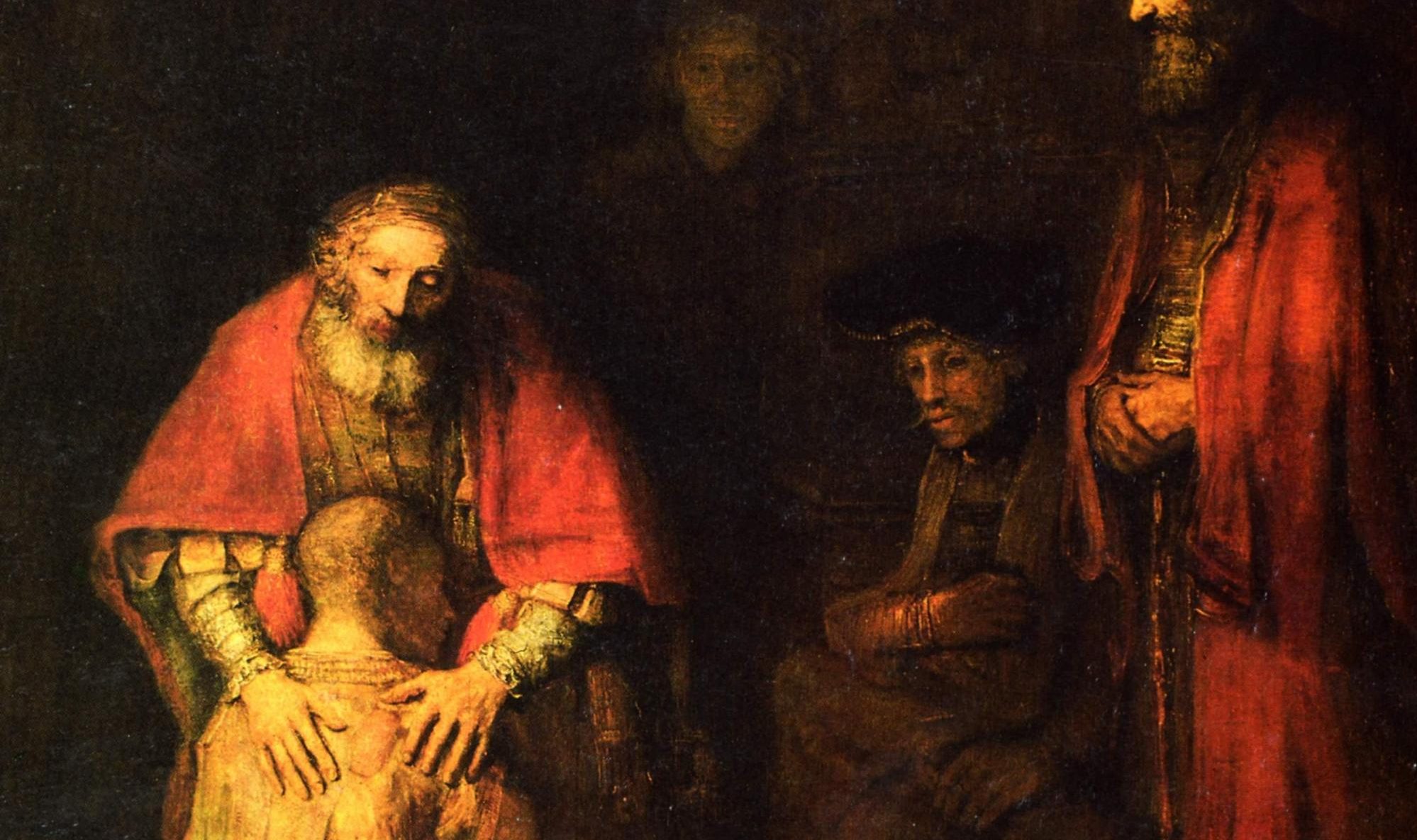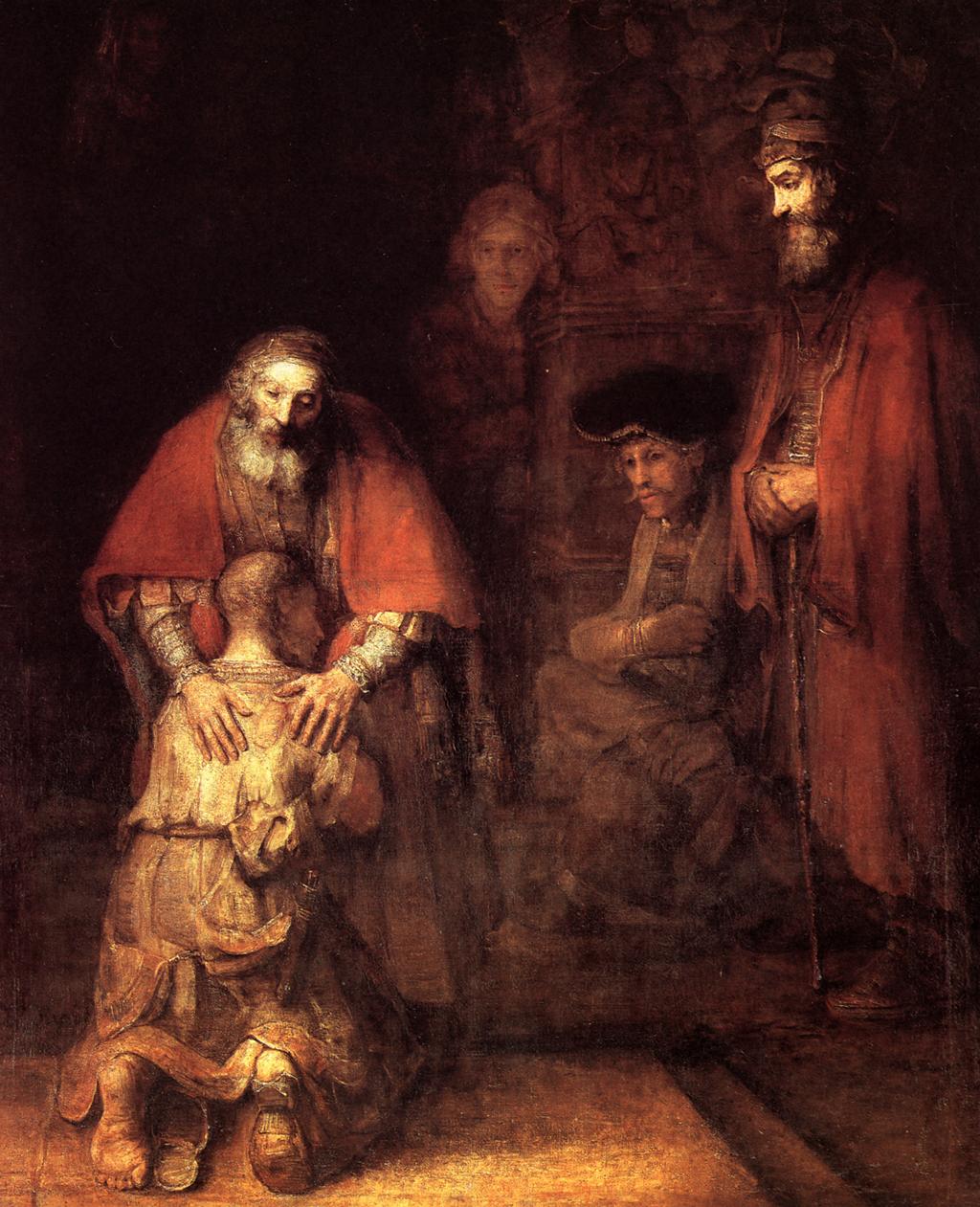
Rembrandt The Return of the Prodigal Son Framed Canvas Print 22"x27" (V0631) eBay
A chance encounter with a reproduction of Rembrandt's The Return of the Prodigal Son catapulted Henri Nouwen on an unforgettable spiritual adventure. Here he shares the deeply personal and resonant meditation that led him to discover the place within where God has chosen to dwell.

Rembrandt The Return of the Prodigal Son Framed Canvas Print 22"x27" (V0631) eBay
The Return of the Prodigal Son is an oil painting by Rembrandt, part of the collection of the Hermitage Museum in St. Petersburg. It is among the Dutch master's final works, likely completed within two years of his death in 1669. Depicting the moment of the prodigal son's return to his father in the Biblical parable, it is a renowned work described by art historian Kenneth Clark as "a picture.

The Return of the Prodigal Son (Rembrandt) Wikipedia
1. It was one of the final paintings that Rembrandt ever worked on Rembrandt Harmenszoon van Rijn was born in 1606, a time now referred to as the Dutch Golden Age. Also known as the "Dutch Miracle," this was a period in which the Dutch Republic was one of the most advanced nations in the world.

Rembrandt's Painting The Return of the Prodigal Son Rachel Shockey Studio
Amuze Art Lecture #3: A detailed discussion of The Return of the Prodigal Son, painted by Rembrandt in 1668/1669.This work is on display in the Hermitage Mus.

The Return of the Prodigal Son by Rembrandt van Rijn Rembrandt prodigal son, Rembrandt
The Return of the Prodigal Son, 1669 by Rembrandt The Return of the Prodigal Son is among the Rembrandt's final works, likely completed within two years of his death in 1669.

Return of The Prodigal Son, c.1668 by Rembrandt Van Rijn Art Print, 18 x 24 inches
Description Name: The Return of the Prodigal Son (1666-69) Artist: Rembrandt van Rijn (1606-69) Medium: Oil painting on canvas Genre: Religious history painting Movement: Dutch Baroque art Location: Hermitage Museum, St Petersburg For an explanation of other celebrated oils and frescoes, please see: Famous Paintings Analyzed (1250-1800).

Rembrandt The Return of the Prodigal Son, 1668 Art in Detail Tutt'Art Pittura
The Met's collection of drawings and prints—one of the most comprehensive and distinguished of its kind in the world—began with a gift of 670 works from Cornelius Vanderbilt, a Museum trustee, in 1880. Timeline of Art History Chronology Low Countries, 1600-1800 A.D. Resources for Research

Rembrandt The Return of the Prodigal Son, 1668 Art in Detail Tutt'Art Pittura
The Return of the Prodigal Son is one of Rembrandt's final paintings completed in the year 1669. This oil painting is based on the Biblical parable of the Prodigal Son, also known as the parable of the two brothers. This chapter appears in the Gospel of Luke, chapter 15. This Baroque masterpiece is now at the Hermitage Museum, Russia.

The Return of the Prodigal Son, 1669 Rembrandt
Dimensions: 206 x 262 cm Order Oil Painting reproduction Wikipedia article References The Return of the Prodigal Son is an oil painting by Rembrandt. It is among the Dutch master's final works, likely completed within two years of his death in 1669.

Rembrandt_Return_Prodigal_Son Rembrandt, Fils prodigue, Musée de l'ermitage
"The Return of the Prodigal Son" by Rembrandt van Rijn (1606-1669). Photo: Google Art Project/Public Domain. Rembrandt van Rijn was the greatest painter of the Dutch Golden Age — and to some, of any age. Known as both the "painter of light," and an astute observer of the human spirit, the artist used his unsurpassed technical skills.

FileRembrandtThe return of the prodigal son.jpg Wikimedia Commons
The Return of the Prodigal Son is one of Rembrandt's masterpieces. This painter is renowned for his various works of art that are related to history or to biblical stories, and The Return of the Prodigal Son is considered to be one of his best pieces. This is an oil on canvas painting which he completed shortly before dying in 1669.

Rembrandt’s Prodigal A Life Lesson
The Return of the Prodigal Son was produced by Rembrandt during his final years alive. Lots of art historians around the world agree that this painting is perhaps the magnum opus of.

Rembrandt, The Return of the Prodigal Son Hermitage Museum, St. Petersburg Caravaggio, Art
"The Return of the Prodigal Son" is among Rembrandt's final works, completed within two years of his death in 1669. The painting includes figures not related to the parable but seen in some of these earlier works. The woman at top left, barely visible, is likely the mother, while the seated man, whose dress implies wealth, maybe a friend.

Rembrandt The Return of the Prodigal Son, 1668 Art in Detail Tutt'Art Pittura
Details Title: Return of the Prodigal Son Creator: Rembrandt Harmensz van Rijn Creator Death Place: Amsterdam, the Netherlands Creator Birth Place: Leiden, the Netherlands Date Created:.

Pin on Rembrandt!
The Return of the Prodigal Son is currently held in The Hermitage Museum in St Petersburg, Russia. Rembrandt van Rijn (1606-1669) - most commonly referred to simply as Rembrandt - was a famous Dutch painter in the 17th century. He is considered one of the greatest visual artists of all time for mastering painting, draughtsman and printmaking.

Rembrandt Return of the Prodigal Son Giclee Print on Canvas size 24x32 eBay
The Return of the Prodigal Son ( Dutch: De terugkeer van de verloren zoon) is an oil painting by Rembrandt, part of the collection of the Hermitage Museum in St. Petersburg. It is among the Dutch master's final works, likely completed within two years of his death in 1669. [1]